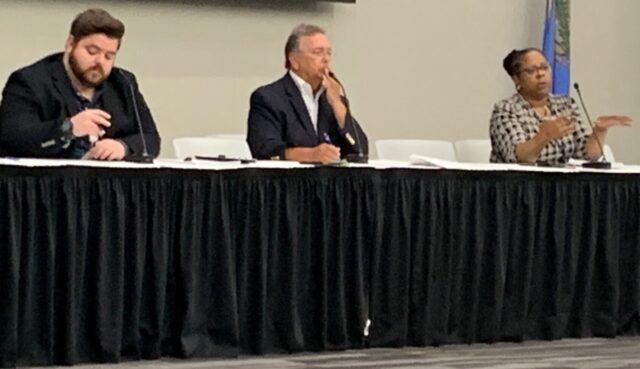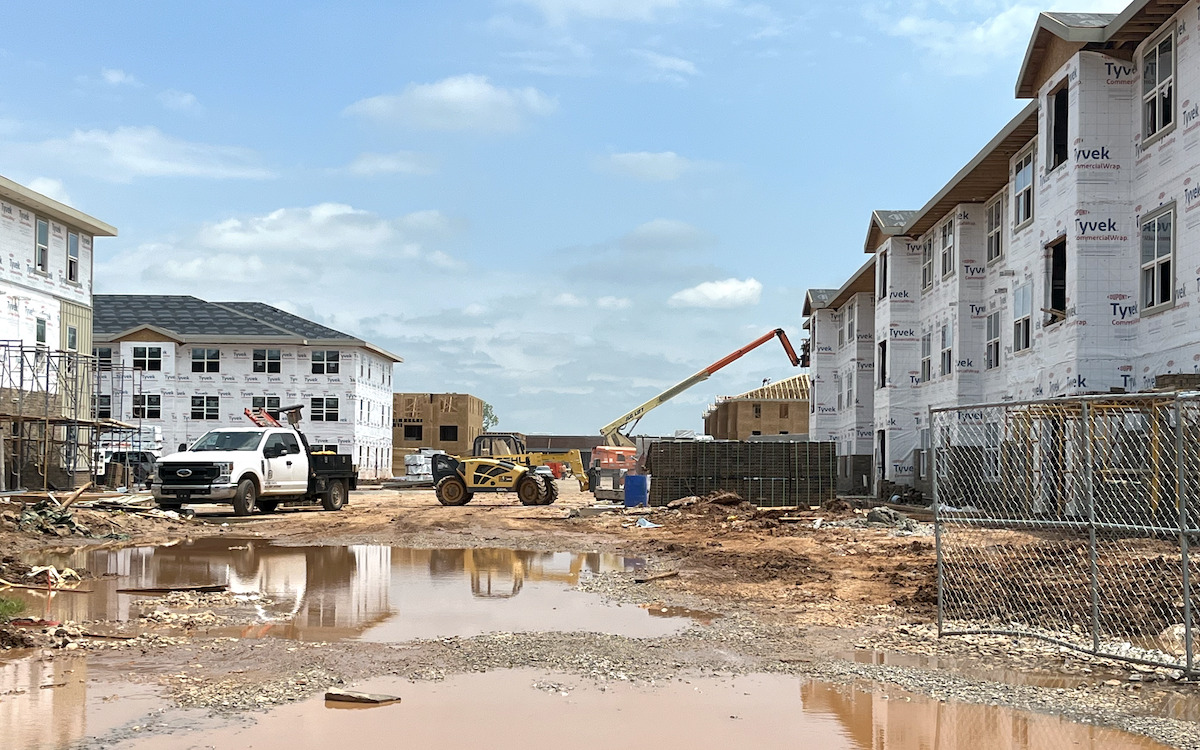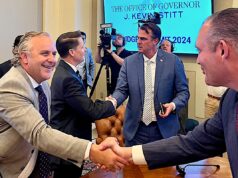

Oklahoma’s Legislature took a crack at making housing more accessible and affordable to middle- and lower-income people across the state this year by creating the new Oklahoma Housing Stability Program and dedicating $215 million toward the construction of new homes and assistance for those looking to live in them.
The Oklahoma Housing Finance Agency is administering the program and proposing rules for implementation. As part of that process, the agency is the holding a series of listening sessions open to the general public, realtors, developers and those who work in nonprofits that help people get into homes, either as renters or buyers.
Monday’s session was held at Metro Tech in Oklahoma City and featured plenty of feedback from industry players. Another session was held Tuesday in Tulsa, and a Zoom meeting is slated for 1 p.m. Wednesday.
OHFA program director Darrell Beavers said four other sessions will be scheduled in rural areas of the state over the coming months.
“Our goal is to take what we hear at these meetings and use the ideas where we can and where they fit,” Beavers told the crowd in the Metro Tech auditorium as Monday’s session began.
Program includes homebuilder subsidies, downpayment support

A purpose of the program is to increase the number of single-family homes available for purchase across Oklahoma by providing gap financing to assist buyers and offer incentives to entice developers to build homes within specific parameters: from 1,300 to 2,200 square feet in size and between $140 and $160 per square foot in cost, depending where the home is located.
Lawmakers said during session that the state is drastically lacking workforce housing.
“There’s a housing shortage, period, every place I look, and I’m from rural Oklahoma,” House Appropriations and Budget Chairman Kevin Wallace (R-Wellston) said in May. “Every time a new teacher comes in, there’s never a place they can live. There’s never any open housing.”
Included the Legislature’s $215 million funding package is $81.7 million for homebuilder subsidies, including 0 percent interest loans. Those homes would eventually be sold to individuals who qualify for OHFA’s down-payment assistance program.
Also included is another $81.7 million of subsidies for developers to construct affordable rental properties at a maximum cost of $250,000 per unit.
An additional $40.8 million will be used to assist consumers with down payments and closing costs to buy new homes built through the program. Those who participate are required to live in the home for at least five years. If the resident stays in the home for that period, the down payment costs are eventually forgiven on a pro-rated basis determined by the amount of time the resident lived in the property.
Finally, $10.7 million has been allocated for OHFA administrative costs associated with running the program.
“It is not our goal to make money off of this,” Beavers told the audience at Metro Tech. “We want this money to go to what it is intended for, so our administrative money will be spent on getting the money out there and monitoring it and making sure it is doing what the Legislature intended.”
OHFA homeownership director Valenthia Doolin told the audience that down-payment assistance helps with one of the key barriers to home ownership.
“What we know is people lack the ability to come up with the down payment required to purchase a home,” Doolin said. “Any effort to improve home ownership in Oklahoma needed to include an aspect that will help individual households have enough money to finance down payment and/or closing costs.”
Feedback: ‘Leave some flexibility for what the market dictates’
OHFA officials had no shortage of realtors and developers who attended their first public session on Monday. OKC-based real estate agent Boston Snowden said more education is needed for those in the industry.
“I find that as a BIPOC developer, it’s not an even playing field,” he told OHFA officials. “And that’s no offense to anyone here. I’m pretty sure everyone here would like it to be. But the situation just isn’t that way. Learning about affordable housing is very complicated, and once you learn it, you also learn you need a lot of money. Just to get started you need marketing analysis, pre-development fees, and site control. There are lots you have to have. My question: Is there going to be money for developers who aren’t traditionally in this situation? It could be education or other help — loans, grants, some of these things that would make it a little more even.”
Retired homebuilder David Richey questioned whether homes could be built for the $140 per square foot in rural areas and $160 per square foot in urban areas as outlined in OHFA’s initial guidelines, though those are subject to change.
“I’ve got news for you, when you buy lumber and you want it delivered to Jones, Oklahoma, they’re not going to give you a break in price because you’re building in a rural area,” Richey told OHFA officials. “They’re going to charge you more. Just because you do it in the country doesn’t mean it’s cheaper. That’s not the way it comes out. Most of the stuff we’re seeing built on standard-spec houses is anything from $180 to $200 per foot.”
Lawton-based builder Ron Nance told OHFA officials there is a great need for rental property across Oklahoma.
“Let me say that I believe home ownership is a way that people are able to build a very nice nest egg for themselves that they can use later in life, but my concern is with interest rates the way they are now, there aren’t going to be as many moderate house payments as there have been in the past,” he said. “This program will help people buy houses, but what we see is a lot of people who cannot afford to make a payment, so they rent. It’s a necessity that they rent. I would have a hard time predicting in our market, and the rest of the state, that a 50-50 split from buying and renting is the way the customers come. What I’m trying to say is to leave some flexibility for what the market dictates. I would hope that we see a lot of home buyers, but we are likely to have more renters.”
Gary Jones, the government affairs director for the OKC Metro Association of REALTORS, urged OHFA to administer the program as efficiently as possible so that more money can be allocated by the Legislature in the future to help continue to build more homes across the state.
“There is one thing that our membership has in common is that the amount of money in this legislation is not enough to address the overall needs in the state of Oklahoma,” Jones said. “That is why it is important that you are as successful in this as you possibly can be so that we can show the Legislature this is a good investment.”
CAIR Oklahoma advocacy coordinator Nicole Baumann questioned the decision of OHFA to allocate most of the $215 million to assist rural communities with housing. Baumann also works with an area housing coalition. Under current OHFA guidelines, 75 percent of the money will go to rural areas, with just 25 percent allocated to urban areas. Rural Oklahoma has seen its population decline as the state’s population continues to grow overall.
“I know you said the rural-urban split was fairly non-negotiable, and I acknowledge the spirit of the bill, but I’ve been wondering if that is a needs-based assessment?” she asked Beavers.
Beavers said the split is how the OHFA interpreted the wishes of the Legislature when it crafted the bill.
“It’s pretty clear the legislation was intended to help rural areas the most,” Beavers said. “The 75-25 isn’t based on empirical data. It’s based on what we perceive, and that is 75 percent of the money should go to rural areas.”
OKC-based real estate agent and developer Nick Singer also questioned the split.
“The rural areas are depopulating,” he said. “While they do have a need for housing, the urban areas are growing much faster. Oklahoma as a whole grew 5.5 percent in the 2010 to 2020 census and rural areas didn’t follow that trend. It doesn’t make sense to build a bunch of housing where people don’t want to live.”
The OHFA draft rules on the Housing Stability program can be read here.
(Correction: This article was updated at 3 p.m. Thursday, July 13, to correct reference to Nicole Baumann’s last name and occupation.)




















